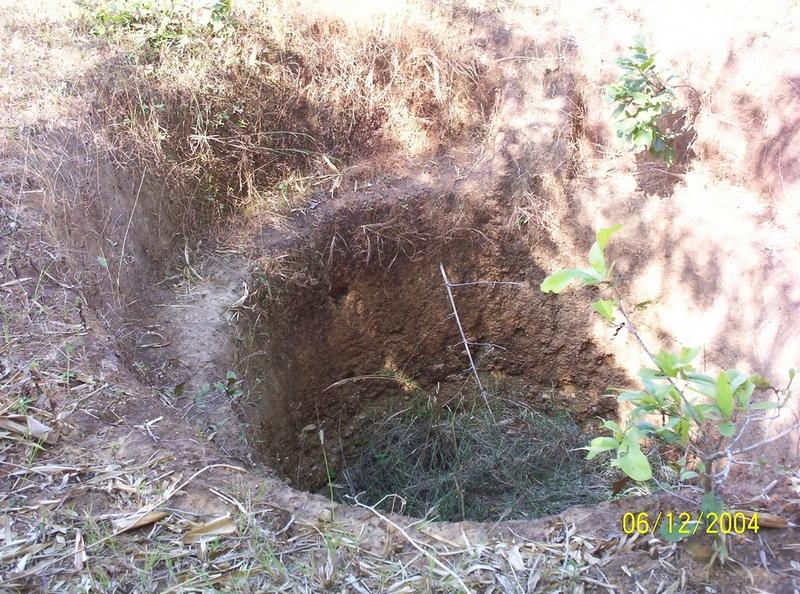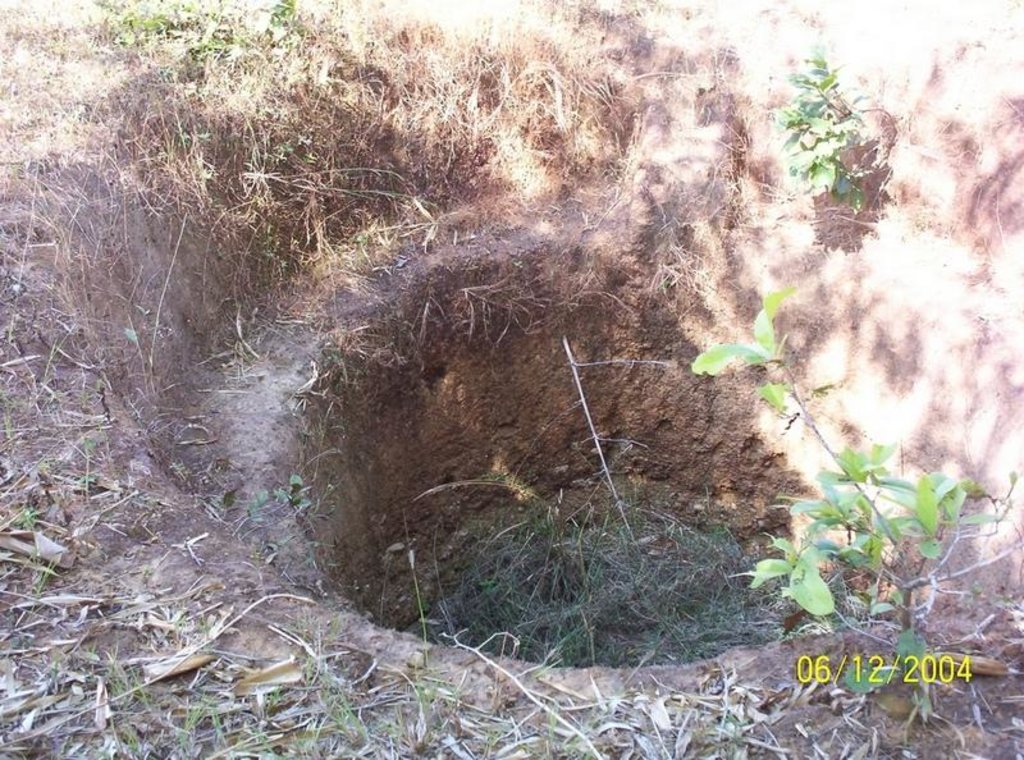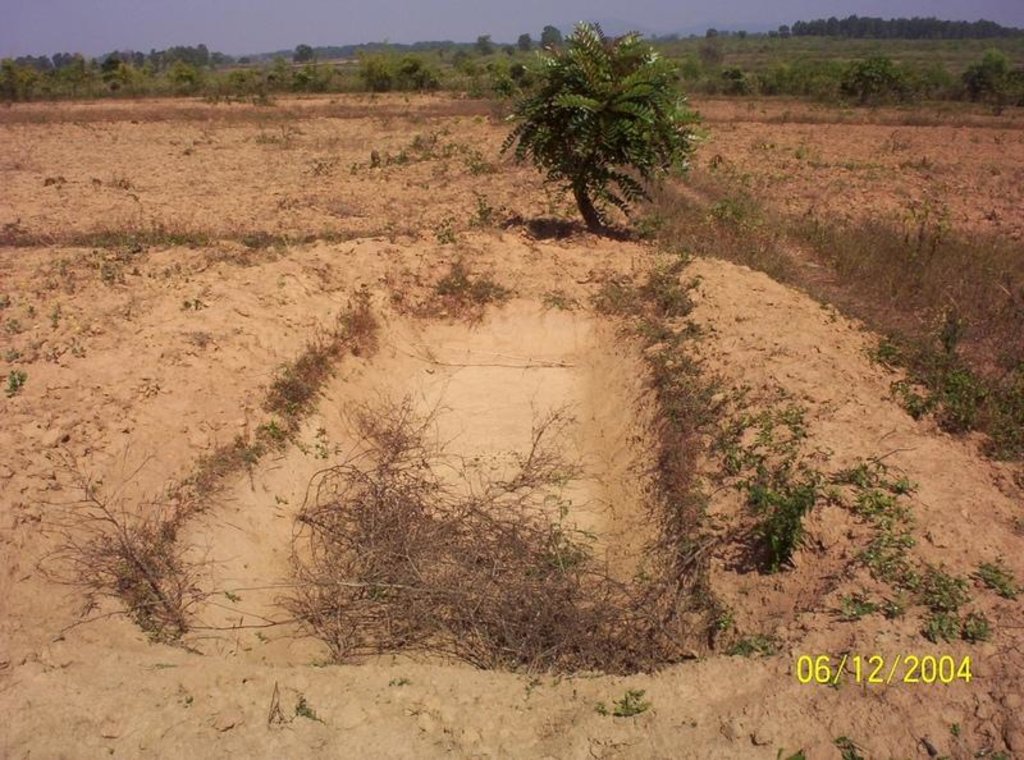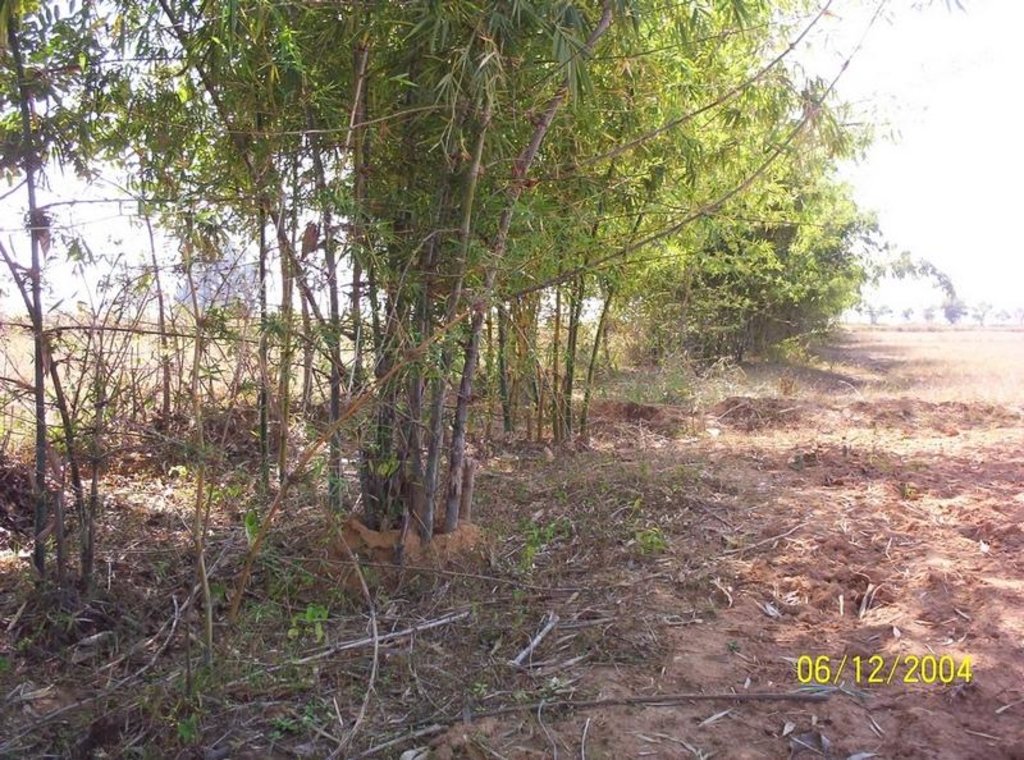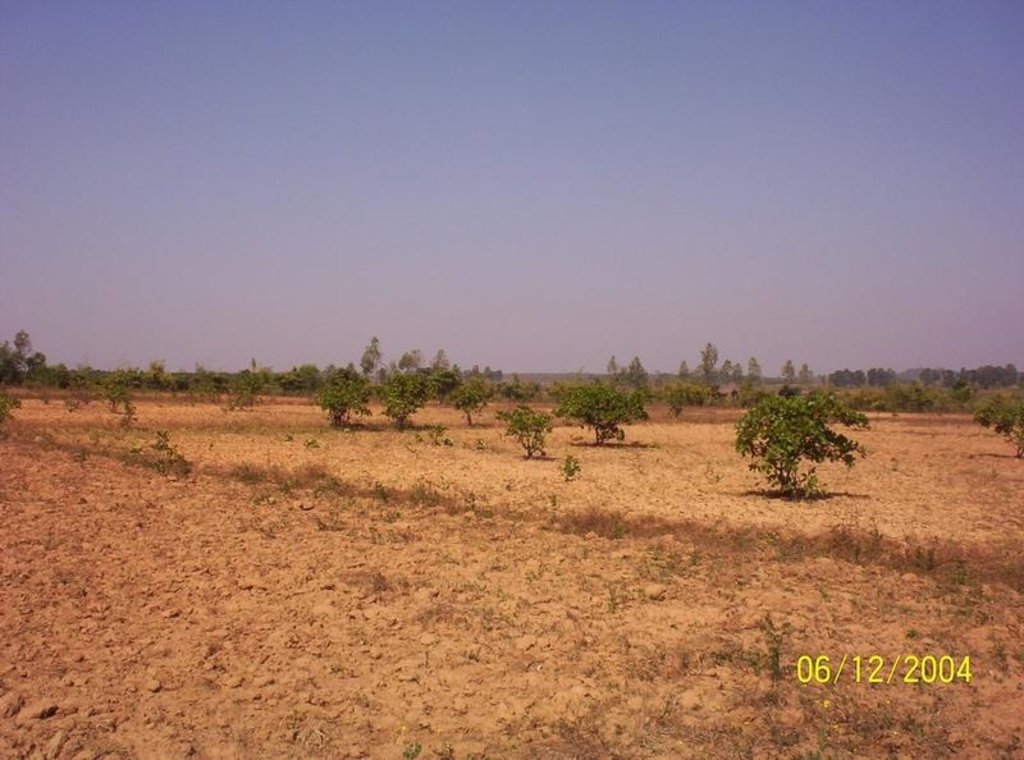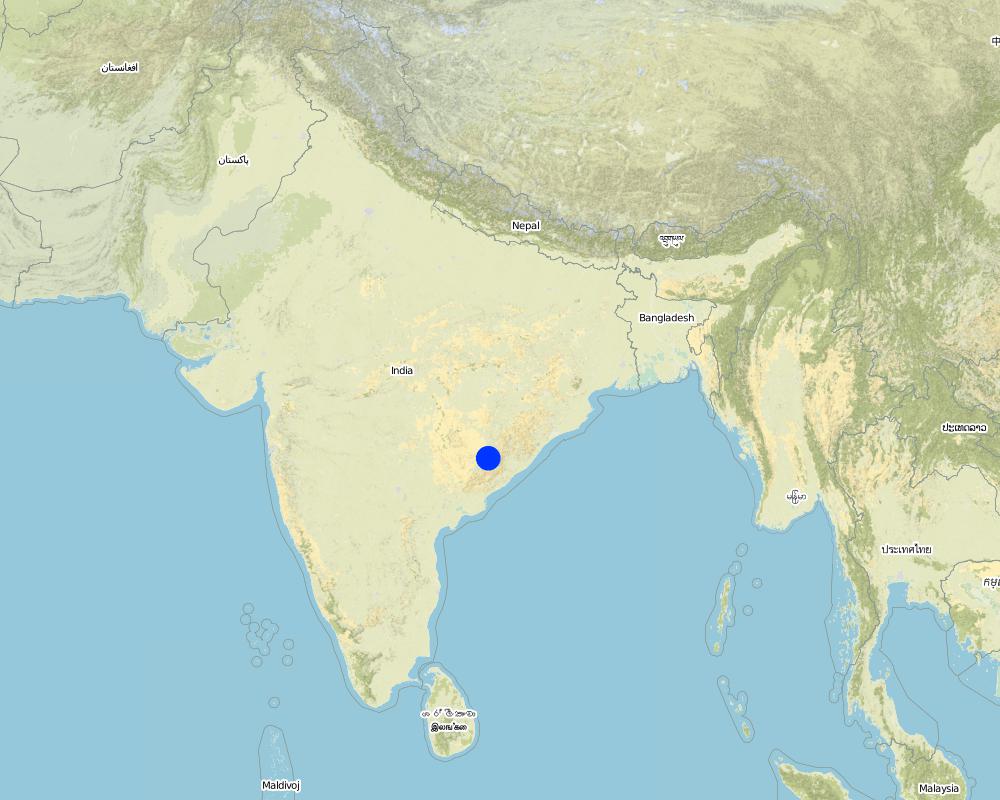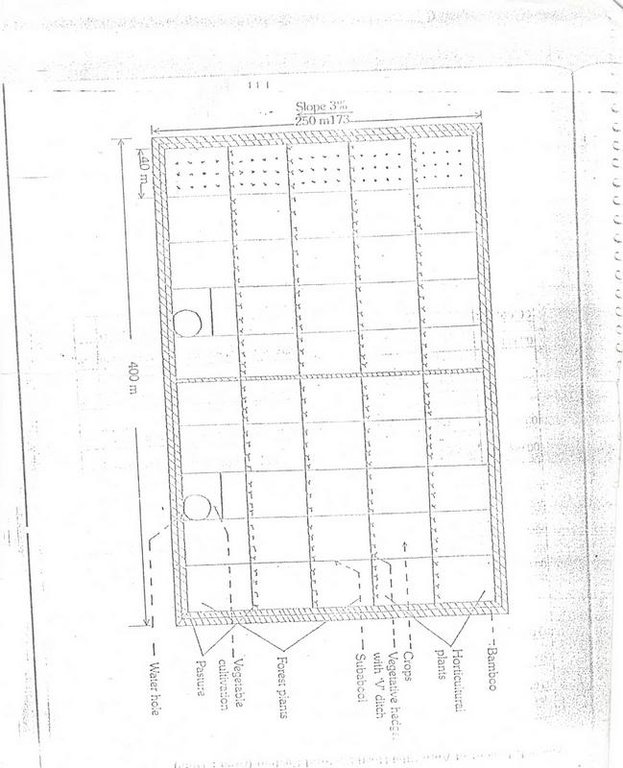Integrated Farming System [Índia]
- Criação:
- Atualização:
- Compilador/a: Srikanta Kumar Parida
- Editor: –
- Revisores: Fabian Ottiger, Alexandra Gavilano
technologies_1085 - Índia
Veja as seções
Expandir tudo Recolher tudo1. Informação geral
1.2 Detalhes do contato das pessoas capacitadas e instituições envolvidas na avaliação e documentação da tecnologia
Especialista em GST:
Pradhan Gandhi
Índia
Especialista em GST:
Pradhan Damodar
Índia
Especialista em GST:
Panda R.K
Central Soil & Water Conservation Research & Training Institute
Índia
Especialista em GST:
Mohanty B.B
Sarvodaya Samiti
Índia
Nome da(s) instituição(ões) que facilitou(ram) a documentação/ avaliação da Tecnologia (se relevante)
Sarvodaya Samiti - Índia1.3 Condições em relação ao uso da informação documentada através de WOCAT
O compilador e a(s) pessoa(s) capacitada(s) aceitam as condições relativas ao uso de dados documentados através do WOCAT:
Sim
1.5 Referência ao(s) questionário(s) sobre abordagens GST (documentado(s) usando WOCAT)
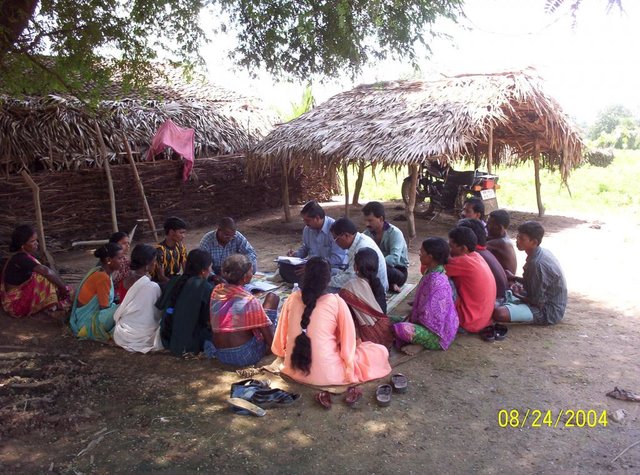
PARTICIPATORY APPROACH IN IDCWDP, DANIDA [Índia]
Participatory approach for holistic and intigrated development of the defined area on watershed basis involving all level of stake holders.
- Compilador/a: Srikanta Kumar Parida
2. Descrição da tecnologia de GST
2.1 Descrição curta da tecnologia
Definição da tecnologia:
Growing of crops for food, fodder trees and fibre forest in a compact patch.
2.2 Descrição detalhada da tecnologia
Descrição:
This technology has mainly to be applied on 5 Ha.of private waste land of poor farmers to increase production. This technology focuses on life fencing, planting of trees for both timber and food varieties, land development, water availability and green manuring. Three line bamboo plantation has been done by laying method at all along the boundary line. Agave also planted at boundary line to give additional protection. Then proper compartmentation has been done keeping intact the total area of individual land holders. Here 'V' ditches has been provided accross the slope of total land. Some fruit and fodder, forest trees were planted all along the bunds and inside the field. The density of tree plantation at crop field is less. So as to facilitate crop cultivation. Gullies has also been arrested by construction of gully control structures. One waterhole has been excavated for life saving irrigation. To manage field waste and to get green manure three compost pits also established.
Establishment / maintenance activities and inputs: After several meeting and interaction with village people, this technology has been established. All the land users where technology is applied were fully engaged for every construction work. So as to have a clear understaing of each small intervention. As this technology uses locally available materials, its maintenance by land users become easy.
Natural / human environment: Here Soil & Water Conservation has been given importance, hence more vegetative cover has been noticed in and around technology area. Increase of soil fertility has also been noticed. Complete barren land conveted in to crop land. So the technology has positive impact on the environment undoubtedly.
2.3 Fotos da tecnologia
2.5 País/região/locais onde a tecnologia foi aplicada e que estão cobertos nesta avaliação
País:
Índia
Região/Estado/Província:
Orissa
Especificação adicional de localização:
Orissa
Especifique a difusão da tecnologia:
- Uniformemente difundida numa área
Se a Tecnologia estiver uniformemente distribuída por uma área, especifique a área coberta (em km2):
0,05
Se a área precisa não for conhecida, indicar a área aproximada coberta:
- < 0,1 km2 (10 ha)
Comentários:
Total area covered by the SLM Technology is 0.05 km2.
Map
×2.6 Data da implementação
Caso o ano exato seja desconhecido, indique a data aproximada:
- menos de 10 anos atrás (recentemente)
2.7 Introdução da tecnologia
Especifique como a tecnologia foi introduzida:
- através de projetos/intervenções externas
Comentários (tipos de projeto, etc.):
Project SWC Specialist utilizing the earlier experience in the project and other area.
3. Classificação da tecnologia de GST
3.1 Principal/principais finalidade(s) da tecnologia
- Melhora a produção
- Reduz, previne, recupera a degradação do solo
3.2 Tipo(s) atualizado(s) de uso da terra onde a tecnologia foi aplicada
Uso do solo misturado dentro da mesma unidade de terra:
Sim

Terra de cultivo
- Cultura perene (não lenhosa)
- Cultura de árvores e arbustos
Cultivo perene (sem lã) - Especificar culturas:
- agave/sisal

Floresta/bosques
- Plantação de árvores, reflorestamento
Plantação de árvores, florestamento: Especificar a origem e composição das espécies:
- Monocultura de variedade local
Tipo de árvore:
- Bambu de bambu

Terra improdutiva
Especifique:
Wastelands, deserts, glaciers, swamps, recreation areas, etc
Comentários:
Major land use problems (compiler’s opinion): Due to slope and lack of vegetation cover, majority top soil were lost and many gullies also formed as a result there was no scope for cultivation.
Major land use problems (land users’ perception): The soil was hard, no fertility, land is slopy. So there was no scope for any kind of cultivation in the same patch of land.
Constraints of wastelands / deserts / glaciers / swamps: Slope, Soil loss
Number of growing seasons per year: 1
Longest growing period in days: 150 Longest growing period from month to month: Jun - Oct
3.5 Grupo de GST ao qual pertence a tecnologia
- Medidas de curva de nível
- Coleta de água
- Gestão de irrigação (inclusive abastecimento de água, drenagem)
3.6 Medidas de GST contendo a tecnologia

Medidas estruturais
Comentários:
Main measures: structural measures
Secondary measures: agronomic measures, vegetative measures
Type of agronomic measures: manure / compost / residues
Type of vegetative measures: aligned: -contour, aligned: -graded strips *<sup>3</sup>, aligned: -against wind
3.7 Principais tipos de degradação da terra abordados pela tecnologia

Erosão do solo pela água
- Wt: Perda do solo superficial/erosão de superfície
- Wg: Erosão por ravinas/ravinamento

Deteriorização química do solo
- Cn: declínio de fertilidade e teor reduzido de matéria orgânica (não causado pela erosão)
Comentários:
Main type of degradation addressed: Wt: loss of topsoil / surface erosion
Secondary types of degradation addressed: Wg: gully erosion / gullying, Cn: fertility decline and reduced organic matter content
Main causes of degradation: other human induced causes (specify) (agricultural causes - Coordination of traditional method of agricultural practices like along the slope, use of long term local varieity of seeds etc.), poverty / wealth (lack of captial)
Secondary causes of degradation: education, access to knowledge and support services (lack of knowledge), Erosion problem, Common social practices
3.8 Redução, prevenção ou recuperação da degradação do solo
Especifique o objetivo da tecnologia em relação a degradação da terra:
- Recuperar/reabilitar solo severamente degradado
Comentários:
Main goals: rehabilitation / reclamation of denuded land
4. Especificações técnicas, implementação de atividades, entradas e custos
4.1 Desenho técnico da tecnologia
Especificações técnicas (relacionada ao desenho técnico):
Diagram showing different soil conservation measures
Location: Maliguda. Koraput/Orissa/India
Date: 15/3/2005
Technical knowledge required for field staff / advisors: moderate
Technical knowledge required for land users: low
Main technical functions: control of dispersed runoff: retain / trap, control of concentrated runoff: retain / trap
Secondary technical functions: reduction of slope length, increase of surface roughness, increase in soil fertility
Agronomic measure: Green Fencing
Material/ species: Bamboo, Agave
Remarks: Two type of Bamboo and Agave provided all round the technology area
Manure / compost / residues
Remarks: 3 compost pits has been established.
Agronomic measure: Tillage with country plough
Aligned: -contour
Vegetative material: G : grass
Number of plants per (ha): 15000
Vertical interval between rows / strips / blocks (m): 0.25
Spacing between rows / strips / blocks (m): 0.25
Vertical interval within rows / strips / blocks (m): 0.3
Width within rows / strips / blocks (m): 0.3
Aligned: -graded strips
Vegetative material: F : fruit trees / shrubs, O : other
Number of plants per (ha): 114
Vertical interval within rows / strips / blocks (m): 9.15
Width within rows / strips / blocks (m): 9.15
Aligned: -against wind
Vegetative material: T : trees / shrubs
Number of plants per (ha): 1
Vertical interval between rows / strips / blocks (m): 1
Spacing between rows / strips / blocks (m): 1
Vertical interval within rows / strips / blocks (m): 1
Width within rows / strips / blocks (m): 0.33
Trees/ shrubs species: Bamboo, Agave (Sisal)
Fruit trees / shrubs species: Mango and Cashew
Other species: Teak, S.Glauca, Subabul
Slope (which determines the spacing indicated above): 4.00%
If the original slope has changed as a result of the Technology, the slope today is (see figure below): 2.00%
Wall/ barrier
Spacing between structures (m): 6
Depth of ditches/pits/dams (m): 0.3
Width of ditches/pits/dams (m): 1.25
Length of ditches/pits/dams (m): 1.7
Structural measure: Pits
Depth of ditches/pits/dams (m): 25
Width of ditches/pits/dams (m): 0.9
Structural measure: 'V'Ditch with bund
Vertical interval between structures (m): 20
Spacing between structures (m): 15
Depth of ditches/pits/dams (m): 0.6
Width of ditches/pits/dams (m): 0.6
Length of ditches/pits/dams (m): 500
Height of bunds/banks/others (m): 1
Width of bunds/banks/others (m): 1.5
Construction material (earth): Bund constructed with earth
Construction material (other): Barries established with bamboo along the boundary for wind break as well as fence.
Slope (which determines the spacing indicated above): 4%
If the original slope has changed as a result of the Technology, the slope today is: 2%
Vegetation is used for stabilisation of structures.
Autor:
Parida S.K, Koraput,Orissa, In
4.2 Informação geral em relação ao cálculo de entradas e custos
Outro/moeda nacional (especifique):
Rupees
Se for relevante, indique a taxa de câmbio do USD para moeda local (por exemplo, 1 USD = 79,9 Real): 1 USD =:
0,45
Indique a média salarial da mão-de-obra contratada por dia:
0.88
4.3 Atividades de implantação
| Atividade | Periodicidade (estação do ano) | |
|---|---|---|
| 1. | Collection of matured bamboo and laying 9" below earth all along boundary in 3 rows | May |
| 2. | Collection of vertiver strips, trees from local nursery | July |
| 3. | Planting grasses, trees | July to Aug |
4.4 Custos e entradas necessárias para a implantação
| Especifique a entrada | Unidade | Quantidade | Custos por unidade | Custos totais por entrada | % dos custos arcados pelos usuários da terra | |
|---|---|---|---|---|---|---|
| Mão-de-obra | Labour | ha | 1,0 | 313,0 | 313,0 | |
| Equipamento | Animal traction | ha | 1,0 | 7,72 | 7,72 | |
| Material vegetal | Seeds | ha | 1,0 | 39,22 | 39,22 | |
| Material vegetal | Seedlings | ha | 1,0 | 99,0 | 99,0 | |
| Fertilizantes e biocidas | Biocides | ha | 1,0 | 12,33 | 12,33 | |
| Fertilizantes e biocidas | Compost/manure | ha | 1,0 | 32,0 | 32,0 | |
| Fertilizantes e biocidas | Others | ha | 1,0 | 193,33 | 193,33 | |
| Material de construção | Stone | ha | 1,0 | 13,0 | 13,0 | |
| Material de construção | Earth | ha | 1,0 | 55,55 | 55,55 | |
| Material de construção | Pitcher | ha | 1,0 | 13,55 | 13,55 | |
| Outros | Compost pit | ha | 1,0 | 5,0 | 5,0 | |
| Custos totais para a implantação da tecnologia | 783,7 | |||||
| Custos totais para o estabelecimento da Tecnologia em USD | 1741,56 | |||||
Comentários:
Duration of establishment phase: 48 month(s)
4.5 Atividades recorrentes/manutenção
| Atividade | Periodicidade/frequência | |
|---|---|---|
| 1. | Tillage | Jan to June / Twice |
| 2. | Line showing | July / Once |
| 3. | Weeding | Sept / Once |
| 4. | Fertilizer Application | Sept to Oct / Once |
| 5. | Harvesting | Nov / Once |
| 6. | Manuring, weeding and hoeing | September / |
| 7. | Catchpit, pitcher irrigation | November / |
| 8. | Spraying with plant protection materials | December / |
4.6 Custos e entradas necessárias pata a manutenção/atividades recorrentes (por ano)
Comentários:
Convert of degraded fellow private land to a cultivable land on adopting new low cost technology in a 5 Ha. Compact patch. The following benefits -
(1) Slope of the land reduced.
(2) Land protected from severe soil erosion.
(3) Increase the moisture region of the soil.
(4) Soil fertility/ standy increased farmers achieved the minimum common needs (basic) common needy product from the technology i.e food, fuel and fodder etc.
4.7 Fatores mais importantes que afetam os custos
Descreva os fatores mais determinantes que afetam os custos:
(1) High slope:- Slope reduced Nos. of structure adopted. Labour engagement are expose of sub-surface soil used Nos. of planting materials.
(2) Diference:- The planting materials are not locally available and transported from 20 K.Ms distance (Bamboo, Vertiver, Mango, Cashew)
(3) Comunication was not up to SWC spot during the establishment period.
5. Ambiente natural e humano
5.1 Clima
Precipitação pluviométrica anual
- <250 mm
- 251-500 mm
- 501-750 mm
- 751-1.000 mm
- 1.001-1.500 mm
- 1.501-2.000 mm
- 2.001-3.000 mm
- 3.001-4.000 mm
- > 4.000 mm
Zona agroclimática
- Subúmido
Eastern Ghat High Land
5.2 Topografia
Declividade média:
- Plano (0-2%)
- Suave ondulado (3-5%)
- Ondulado (6-10%)
- Moderadamente ondulado (11-15%)
- Forte ondulado (16-30%)
- Montanhoso (31-60%)
- Escarpado (>60%)
Formas de relevo:
- Planalto/planície
- Cumes
- Encosta de serra
- Encosta de morro
- Sopés
- Fundos de vale
Zona de altitude:
- 0-100 m s.n.m.
- 101-500 m s.n.m.
- 501-1.000 m s.n.m.
- 1.001-1.500 m s.n.m.
- 1.501-2.000 m s.n.m.
- 2.001-2.500 m s.n.m.
- 2.501-3.000 m s.n.m.
- 3.001-4.000 m s.n.m.
- > 4.000 m s.n.m.
Comentários e outras especificações sobre a topografia:
Landforms: Hill slopes (ranked 1), ridges (ranked 2) and valley floors (ranked 3)
Slopes on average: Moderate (land Slope having undulated topography)
5.3 Solos
Profundidade do solo em média:
- Muito raso (0-20 cm)
- Raso (21-50 cm)
- Moderadamente profundo (51-80 cm)
- Profundo (81-120 cm)
- Muito profundo (>120 cm)
Textura do solo (solo superficial):
- Grosso/fino (arenoso)
- Médio (limoso, siltoso)
Matéria orgânica do solo superficial:
- Baixo (<1%)
Caso disponível anexe a descrição completa do solo ou especifique as informações disponíveis, p. ex. tipo de solo, PH/acidez do solo, nitrogênio, capacidade de troca catiônica, salinidade, etc.
Soil texture: Medium (ranked 1, sandy loam to silty clay loam) and coarse/light
Soil fertility: Low (ranked 1) and medium (ranked 2)
Topsoil organic matter: Low (loss of top soils due to heavy run off, ranked 1)
Soil drainage/infiltration: Medium (soil varies from loam to silly clay loam, ranked 2)
Soil water storage capacity: Low
5.6 Características dos usuários da terra que utilizam a tecnologia
Rendimento não agrícola:
- 10-50% de toda renda
Nível relativo de riqueza:
- Pobre
- Média
Indique outras características relevantes dos usuários da terra:
Population density: < 10 persons/km2
Annual population growth: 2% - 3%
24% of the land users are rich and own 30% of the land.
45% of the land users are average wealthy and own 56% of the land (30% of house hold comes in standard wealth.).
31% of the land users are poor and own 14% of the land (70% of house hold comes below average).
Off-farm income specification: Through various training, interaction with specialist, they acquire more knowledge about other small business like Goatery, Poultry, Pisciculture, Beekeeping, Floriculture and also marketing facility and utilizing these knowledge their off-farm income increase.
5.8 Propriedade de terra, direitos de uso da terra e de uso da água
Propriedade da terra:
- Indivíduo, intitulado
Direitos do uso da terra:
- Indivíduo
6. Impactos e declarações finais
6.1 Impactos no local mostrados pela tecnologia
Impactos socioeconômicos
Produção
Produção agrícola
Produção de forragens
Qualidade da forragem
Produção de madeira
Renda e custos
Rendimento agrícola
Comentários/especificar:
Finding market and getting better price f or product
Disparidades econômicas
Impactos socioculturais
Instituições comunitárias
Comentários/especificar:
Formation of UG/ SHG
Conhecimento de GST/ degradação da terra
Comentários/especificar:
Imparting teaching to nearby village people on erosion, loss of top soil and timely aprehension at field
Impactos ecológicos
Ciclo hídrico/escoamento
Escoamento superficial
Quantidade anterior à GST:
50
Quantidade posterior à GST:
40
Drenagem de excesso de água
Comentários/especificar:
Safe disposal of water.
Solo
Umidade do solo
Comentários/especificar:
Adopting soil conservation activities
Cobertura do solo
Comentários/especificar:
Practising cropping
Perda de solo
Quantidade anterior à GST:
46
Quantidade posterior à GST:
20
Clima e redução de riscos de desastre
Velocidade do vento
Comentários/especificar:
Planting of bamboo at boundary
Outros impactos ecológicos
Soil fertility
Comentários/especificar:
On decomposition of straw
Biodiversity
Seed quality
Comentários/especificar:
Better procurement of good quality of seeds
6.2 Impactos externos mostrados pela tecnologia
Caudal confiável e estável em período seco
Comentários/especificar:
Stream flow remains up to February
Cheias de jusante
Comentários/especificar:
No flooding seen
6.4 Análise do custo-benefício
Como os benefícios se comparam aos custos de implantação (do ponto de vista dos usuários da terra)?
Retornos a curto prazo:
positivo
Retornos a longo prazo:
positivo
Como os benefícios se comparam aos custos recorrentes/de manutenção(do ponto de vista dos usuários da terra)?
Retornos a curto prazo:
positivo
Retornos a longo prazo:
positivo
6.5 Adoção da tecnologia
Se disponível, determine a quantidade (número de unidades familiares e/ou área abordada):
26
Comentários:
6 land user families have adopted the Technology with external material support
20 land user families have adopted the Technology without any external material support
Comments on spontaneous adoption: survey results
There is a moderate trend towards spontaneous adoption of the Technology
Comments on adoption trend: Some land users adopted the technology partially. As the technology has different measures, some took field bunds with local grasses, some did tree plantation. Some are planning to plant bamboo in their plot boundary.
6.7 Pontos fortes/vantagens/oportunidades da tecnologia
| Pontos fortes/vantagens/oportunidades na visão do usuário da terra |
|---|
| Low cost technology |
|
Early adoptbility by the farmers How can they be sustained / enhanced? Over all it is a best technology with proper management by the farmers |
| Combination of production gain from bamboo and crop, less use of chemical fertilizer as green manure is available localy. |
| Pontos fortes/vantagens/oportunidades na visão do compilador ou de outra pessoa capacitada |
|---|
|
Low cost and simple tech nology. How can they be sustained / enhanced? Proper understanding by land user for technology |
| Materials are used for the technology available locally |
|
Due to increase of income migration is reduced How can they be sustained / enhanced? Proper adoption of technology |
|
Reduction of runoff and soil loss and increase of soil fertility and soil moisture regime has been increase How can they be sustained / enhanced? Adopting proper cropping pattern. |
6.8 Pontos fracos, desvantagens/riscos da tecnologia e formas de superá-los
| Pontos fracos/desvantagens/riscos na visão do usuário da terra | Como eles podem ser superados? |
|---|---|
| Ownerships of land and additional taxation there on after implementation of technology. | Clear understanding by competant authority ( By revenue people) |
| Fruit trees died | Beneficiaries planted Cashew instead of fruit trees. |
| Pontos fracos/vantagens/riscos na visão do compilador ou de outra pessoa capacitada | Como eles podem ser superados? |
|---|---|
| Clear understanding of the technology. | Regular meeting with local representatives. |
| Availability of materials in the technology area. | Alternative available materials must be used in technology area. |
7. Referências e links
7.1 Métodos/fontes de informação
7.2 Referências às publicações disponíveis
Título, autor, ano, ISBN:
Watershed Survey Report
Disponível de onde? Custos?
Director of Soil Conservation, Orissa, Bhubaneswar
Título, autor, ano, ISBN:
Plan and Estimate
Disponível de onde? Custos?
-do-
Links e módulos
Expandir tudo Recolher tudoLinks

PARTICIPATORY APPROACH IN IDCWDP, DANIDA [Índia]
Participatory approach for holistic and intigrated development of the defined area on watershed basis involving all level of stake holders.
- Compilador/a: Srikanta Kumar Parida
Módulos
Não há módulos


